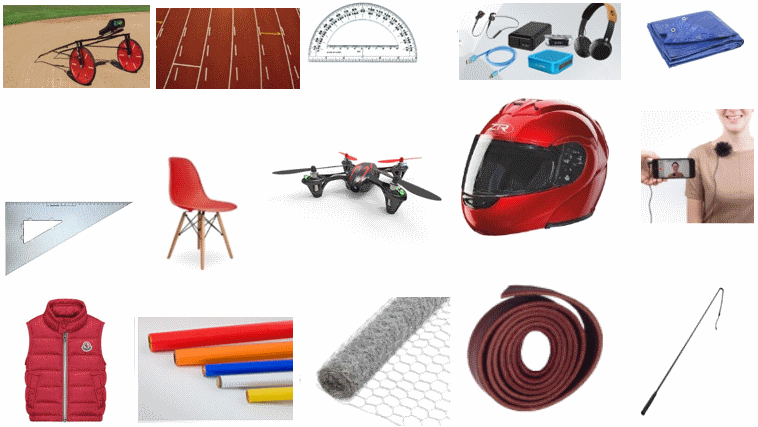How racing can benefit from junk boxes
by Trey Nosrac
Once upon a time, I taught Junior High School science in a large public school system. This was a not as bad as it sounds. June, July, and August totally rocked. I’m not sure what happened to the students during the summer months, perhaps they went back to the farm to harvest corn, or attended remedial classes, or played nonstop video game marathons, but my summer education was furthered in pool halls, on golf courses and at racetracks. Those lazy days of summer were good times.
The non-summer months could be dicey at the old school yard. If teachers succeeded in getting the hormonal juveniles engaged, the days flew past. If teachers did not engage students, objects like chairs and erasers would fly past like shrapnel in a war zone.
One successful engagment for me was a week using objects that did not fly, they rolled. Each year had a slight twist, but the annual “Ramp Wars – The Brawl in the Hall” was always a crowd pleaser. Here is how it went down.
After considering indvidual personalities, I divided the class into teams of four and gave each a team clever names like The Motley Crue or The Rolling Stones. I would then give each team a clear plastic bag with a very primitave car or cart similair to the one pictured above.
Next I would SHOW them, not give them, the contents of a “Junk Drawer.” They were instructed to jot down the items that I would dramatically pull from the junk drawer — rubber bands, tubing, tiny electric motors, buttons, wheels, screws, nails, wooden cubes, wire mesh, tennis balls, batteries, paper clips, string, toothpicks, empty soup cans and other quirky items.
The instructions were that in two days, each team would be handed a box with exactly the same junk box items. They also would recieve a small tool kit with tape, glue, screw driver, hammer and pliers.
Finally, I gave them the challenge.
I would demonstrate how a crude car rolling down the ramp only traveled about two feet. Their task was to re-engineer the car to improve performance. The re-engineered cars would participate in a contest to discover which car would travel the longest distance down the tile hallway in front of our classroom before hitting a sidewall. The victors would get a trophy and lunch at McDonalds.
You might ask, “Why the junk box, why limit the options?”
Some people think theoretically, others think more mechanically. Many students benefit from visual prompts, physical objects, and demonstrations. Asking, “How can these sticks and tennis balls solve the problem?” often can help focus scattershot thinking.
Gosh, did they love this activity. They loved the planning days. They loved the in-class construction days. They loved not having to listen to my lectures. And they were wild in anticaption for the day of the race. Those kids came up some unique ideas that really rolled. They might try to get the motor working, they might alter wheels, experiment with different axels, they might lauch it using a rubberband catapult. They built some pretty cool stuff.
Let us try a few quick lessons of this sort with various challenges in the harness racing world. Over the next few weeks you will be faced with what some percieve to be problems in harness racing. If you are of the opinion that everything is rolling along just fine and any alterations to our historic sport are forbidden, that’s okay, nobody needs to play mad scientist. But some of us just can’t help jumping into a junk box and wielding a pair of needle-nosed pliers.
This is our basic object — a harness race.

Here is a harness racing “junk box” with a selection of various items.

Lesson #1
The task for this week is to re-engineer a racebike to elimate two manuevers that many find objectionable; drivers kicking horses and drivers leaning back in the sulky.
In my world, these are not grevious problems; drivers lying back is “racey looking” and dropping a boot is not a cause for getting the vapors. If I was a driver, I would lean back like a crazed limbo dancer and occasionally have tapping toes. Drivers are competitive folks and adrenaline can kick in at any time.
What I think means nothing. Personal preferences should always take a back seat to progress. Therefore let us all cede that these are problems worth solving, that a re-engineered product that elimates them might improve our product for the majority of our customers.
And it is irrefutable that when five drivers each lean back two feet, the trailing horses have an additional 10 feet to make up. It is also irrefutable that dropping a boot does not look good to civilians. Plus, both tactics are inconsistent, some drivers use them and get away with the infraction, while others do not attempt these manuevers. This causes a degree of unfairness. More troublesome is that enforcement is tricky for these borderline maneuvers.
If we tell drivers not to lean back too far, what is too far? Five degrees? Twenty degrees? One hundred and eighty degrees? Until the helmet touches dirt? Are judges going to race out and measure with a protractor? Is a microscopic nudge the same as a 50-yard punt action? Is one little reminder the same as a driver dancing a tango on a tiring flank. It is very diffiuclt to enforce rules that are fifty shades of grey. Therefore our redesign is to make these manuevers impossible.
Take a look at this version of how to solve this problem. See if you agree. If not come up with one of your own.
My design is simple and obvious. I would use a seat very similar to the chair seat in the junk box to replace the exisiting seat on each racebike. Unless a driver has a spine the consistency of cooked spagetti, they will be unable to lay back. Try it, you will see this is the case. Then, I would use very, very thin chicken wire mesh to create a shield on each bike that would make it impossible to touch toe to hock.
Presto….a more equitable race, basically at no cost, using this little junk box.
Our sport has the whole world as a toolbox. We should roll better.
Next week a new engineering challenge and some more junk.

















